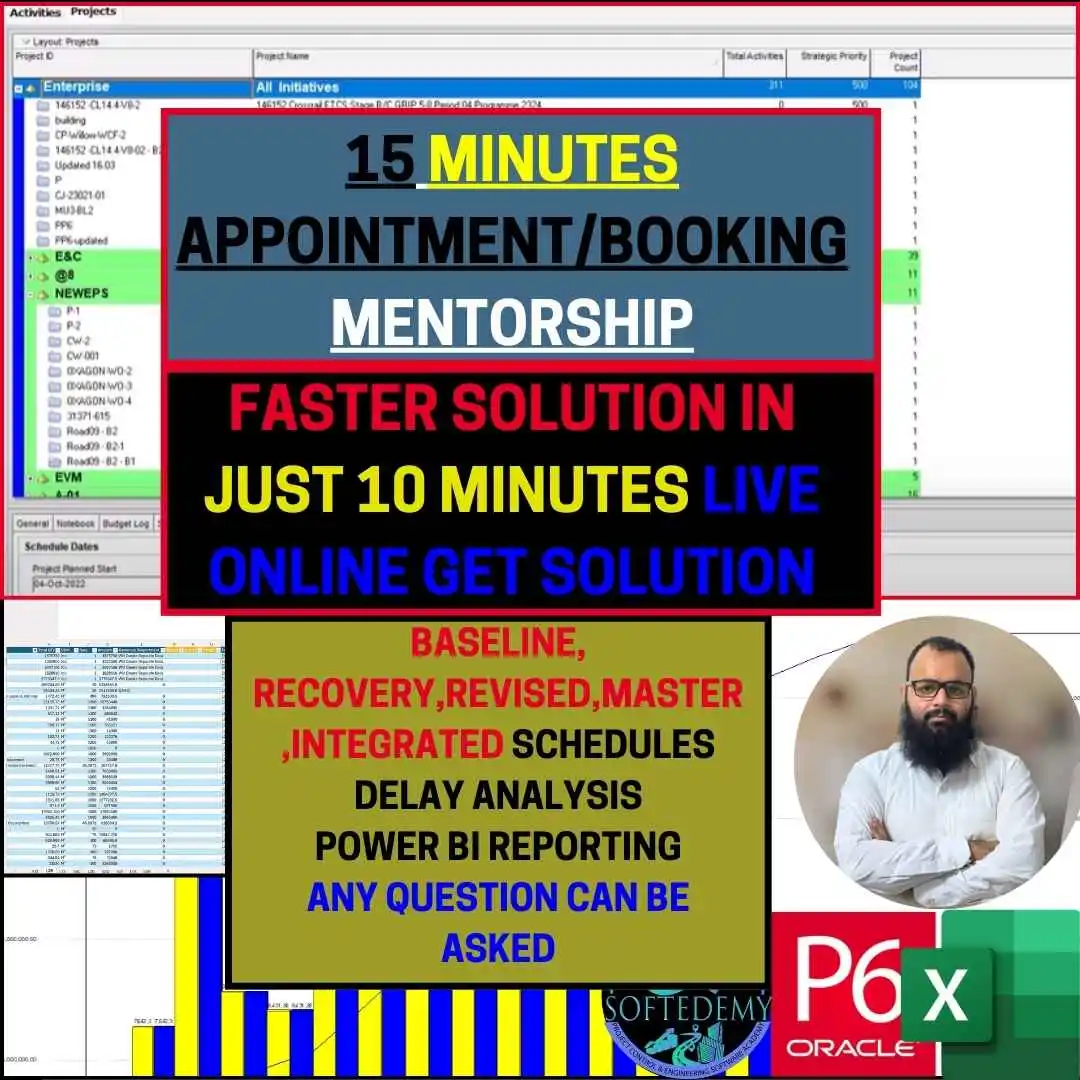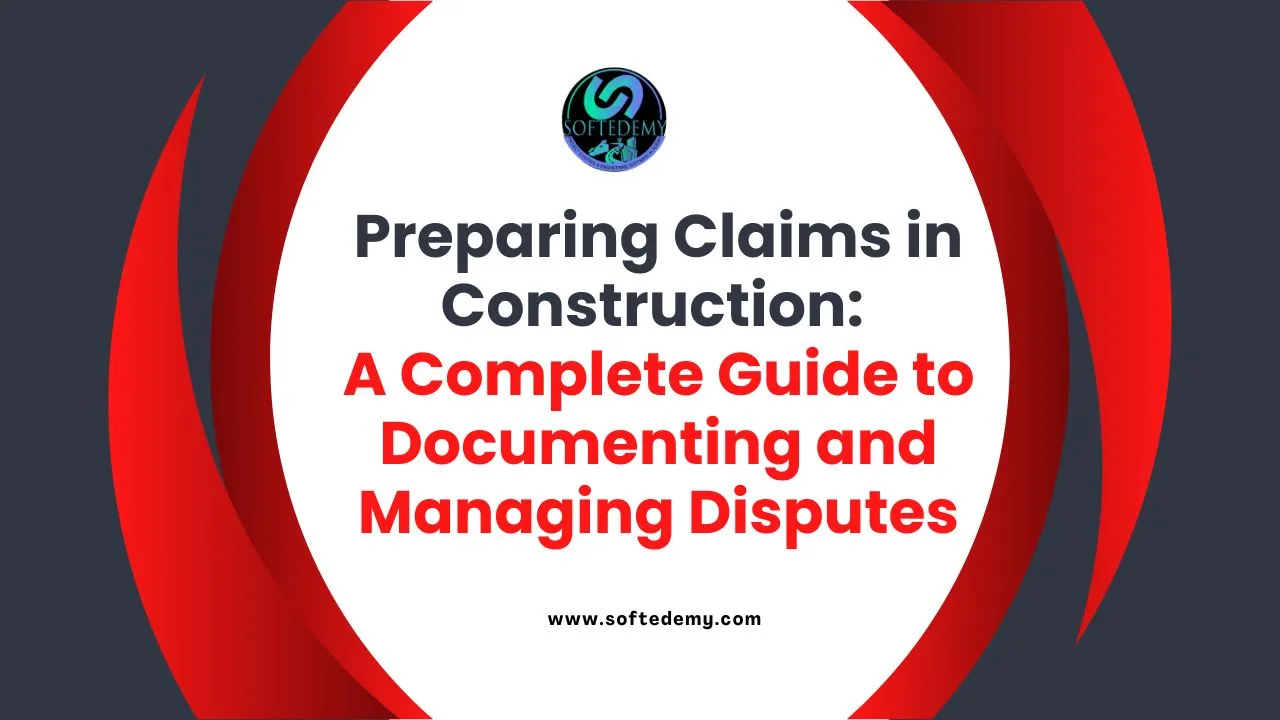Preparing a Claim – Executive Summary
Overview: The Executive Summary serves as a high-level introduction to the claim, encapsulating the essential information that an executive or decision-maker needs to grasp the fundamentals of the issue quickly. It should succinctly describe the project, the nature of the claim, what the contractor seeks, and why.
Examples & Details: For instance, if a contractor encounters unforeseen rock formations during excavation, leading to equipment damage and delays, the executive summary would briefly describe these issues, the additional costs incurred, and the extended timeline for project completion.
Table Example:
| Issue | Impact | Cost Overrun | Time Delay |
| Rock Formation | Additional drilling required | $200,000 | 30 days |
References:
Journal of Construction Engineering and Management
Introduction to the Claim
Purpose: The Introduction should familiarize the reader with the background of the project, delineating the context in which the claim arises. This section is vital for setting the stage for the detailed discussion that will follow.
Format:
- Contracting Parties: Identification of all parties involved in the contract.
- The Bid: Timeline and details of the bidding process.
- The Project: Comprehensive description of the project including scope, location, and key challenges.
Examples:
Description of a commercial building project in downtown San Francisco, highlighting the complexity due to urban setting and stringent regulatory requirements.
Detailed Table:
| Event | Date | Description |
| Bid Opening | 2022-01-15 | Initial bid submission date |
| Project Start | 2022-04-05 | Groundbreaking and commencement |
References:
Contract Representations
Purpose: This section articulates the specific representations made in the contract that form the basis of the contractor’s expectations and subsequent claim when discrepancies arise.
Format:
- Bullet Points of Representations: Key points in the contract regarding scope, materials, timelines, etc.
- Development of Points: Analysis of each point with reference to contract clauses.
Detailed Discussion: Discuss the implications of a clause that specifies “use of locally sourced materials” which were later found to be unsuitable due to quality issues, leading to the need for imports and increased costs.
Example Table:
| Contract Clause | Page | Interpretation | Issue |
| Material Sourcing | 15 | Must use local stone | Insufficient quality, required import |
References:
Construction Law International
Contractor’s Plan
Purpose: Detail the initial plan and methodology proposed by the contractor for the project execution, including timelines, resources, and budget estimates.
Format:
Scheduled Plan vs. Actual Execution: Highlight deviations and their justifications.
Resource Allocation: Initial vs. actual use of resources.
Examples & Case Studies: Illustrate with a case study where unexpected subsoil conditions required a change in the foundation design, escalating costs and extending the timeline.
Table:
| Task | Planned Duration | Actual Duration | Variance |
| Foundation Laying | 30 days | 45 days | +15 days |
References:
To continue with this detailed expansion for the remaining pages, we would further break down each section like Actual Conditions, Impacts, Entitlement, Quantification of Claim, Formal Statement of Claim, and Appendix, incorporating real-life scenarios, data analysis, and references to authoritative sources. This structured approach would ensure that each aspect of the construction claim is comprehensively covered, providing an exhaustive guide for anyone involved in construction disputes.
Actual Conditions
Purpose: To document the conditions actually encountered during the project execution, especially those differing from what was specified or anticipated within the contract.
Format:
Description of Actual Conditions: A factual account of what was found on-site compared to what was expected.
Evidence Gathering: Including photographs, logs, and expert assessments.
Examples:
A scenario where the contractor found contaminated soil not identified in the environmental assessment provided before the bid, resulting in additional cleanup costs and delays.
Table Example:
| Condition Expected | Condition Found | Impact on Project |
| Clean soil | Contaminated soil | Environmental cleanup required, 2-month delay |
References:
International Journal of Project Management
Impacts
Purpose: To analyze and document the repercussions of the actual conditions on the project’s scope, timelines, cost, and quality.
Format:
Detailed Impact Analysis: Quantitative and qualitative analysis of the implications.
Mitigation Strategies: Actions taken to reduce negative impacts.
Examples:
Due to unexpected rock formations, an additional $500,000 was spent on heavy-duty drilling equipment and specialists, impacting the project budget and completion date.
Impact Table:
| Impact Type | Description | Cost Implication | Time Delay |
| Financial | Extra drilling costs | $500,000 | |
| Schedule | Delay in excavation | 60 days |
References:
American Society of Civil Engineers
Entitlement
Purpose: To justify the contractor’s claim for additional compensation or contract adjustments based on the documented impacts and the terms of the contract.
Format:
Legal and Contractual Basis: Identification of clauses that support the claim.
Rationale for Entitlement: Explanation of why these conditions justify a claim.
Examples:
If the contract included a clause for unforeseen conditions, this section would detail how the conditions met these criteria and the legal precedents supporting the claim.
Entitlement Analysis Table:
| Contract Clause | Condition Met | Justification for Claim |
| Clause 7.2 Unforeseen Conditions | Contaminated soil found | Extra costs for soil treatment were unavoidable and substantial |
References:
Journal of Legal Affairs and Dispute Resolution in Engineering and Construction
Quantification of Claim
Purpose: To precisely calculate the additional costs and time requested by the contractor due to the impacts described.
Format:
Cost Breakdown: Itemized list of all additional costs incurred.
Time Analysis: Detailed account of how delays affected the timeline.
Examples:
Detailed calculation of costs for additional materials, labor, equipment, and any idle time charges due to delays.
Quantification Table:
| Item | Planned Cost | Actual Cost | Difference |
| Soil Remediation | $0 | $150,000 | $150,000 |
| Additional Drilling | $50,000 | $300,000 | $250,000 |
References:
Construction Management and Economics
Formal Statement of Claim
Purpose: To formally request adjustments to the contract terms based on the documentation and analyses provided in the previous sections.
Format:
Statement of Claim: A clear, concise statement outlining the request for additional funds and/or time extensions.
Supporting Documentation: Reference to supporting evidence and documents listed in the appendix.
Examples:
Formal claim submission for an additional $400,000 and a 90-day extension to the project completion date due to unforeseen underground utilities and rock formations.
References:
Construction Claim Consultant Resources
Appendix
Purpose: To provide all supporting documentation for the claim, including contracts, emails, logs, expert testimonies, and other relevant materials.
Format:
Index of Documents: A list of documents included, with brief descriptions and their relevance to the claim.
Access Instructions: How to access these documents, if not attached directly
Examples:
Inclusion of geotechnical reports, project correspondence, change order forms, and photographs documenting the conditions and changes required.
Document Table:
| Document Type | Description | Page Number / Link |
| Geotechnical Report | Details on unforeseen soil conditions | Appendix A |
| Email Correspondence | Communications regarding project delays | Appendix B |
| Photographs | Visual proof of conditions on site | Appendix C |
| Expert Testimonies | Statements from industry experts on impacts | Appendix D |
References:
Guidelines on how to structure and organize appendices for legal and construction claims can be found on sites like Project Management Institute.
Additional Resources for Further Reading:
Construction Contracts and Dispute Management
International Construction Law Review
This extensive guide thus serves as both a practical tool and an educational resource, ensuring that construction professionals are well-equipped to handle claims with confidence and legal precision.
Strategic Considerations in Claim Preparation
Purpose: This section focuses on the strategic considerations necessary when preparing and presenting a construction claim to maximize the likelihood of a favorable outcome.
Topics Covered:
Stakeholder Engagement: Strategies for involving all relevant parties early in the claim process to ensure alignment and understanding.
Risk Assessment: Evaluating the potential risks associated with pursuing the claim versus possible settlements.
Negotiation Tactics: Techniques for negotiating with other parties involved in the dispute, including mediation and arbitration options.
Examples:
Demonstrating stakeholder engagement by organizing regular update meetings with all key project stakeholders to discuss the progression of the claim and gather input.
Risk assessment example involving a cost-benefit analysis of pursuing a claim for delayed delivery of materials versus the potential relationship strain with a long-term supplier.
Table: Negotiation Outcomes
| Scenario | Strategy Employed | Outcome Achieved |
| Dispute over scope creep | Mediation session arranged | Agreement to cover 50% of the additional costs |
References:
Negotiation Strategies for Construction Disputes
Documentation and Evidence Management
Purpose: Effective management of documentation and evidence is critical in construction claims. This section provides guidelines on how to organize and present evidence to support the claim.
Topics Covered:
Document Collection: Guidelines for collecting and maintaining records and documents pertinent to the claim.
Evidence Categorization: How to categorize and reference evidence for easy retrieval during the claim process.
Digital Tools: Recommendations on digital tools and software that can assist in managing documents and evidence efficiently.
Examples:
A case study where meticulous record-keeping and immediate documentation of a construction defect helped expedite the claim process.
Table: Evidence Catalogue
| Evidence Type | Document Example | Relevance to Claim |
| Contractual Documents | Signed original contract | Establishes baseline obligations |
| Photographic Evidence | Time-stamped photos of site conditions | Demonstrates condition at specific times |
References:
Digital Document Management in Construction
Legal Framework and Compliance
Purpose: Understanding the legal framework that governs construction contracts and claims is fundamental. This section outlines the legal prerequisites for a valid claim and how to ensure compliance throughout the claim process.
Topics Covered:
Applicable Laws and Regulations: Overview of laws and regulations that impact construction claims.
Compliance Checklist: A checklist to ensure all legal bases are covered when filing a claim.
Case Law Examples: How previous legal cases have influenced current claim practices.
Examples:
Discussion of a landmark case that set a precedent for how unforeseen site conditions are treated legally.
Table: Legal Precedents
| Case Name | Year | Relevance to Claims |
| Smith v. Jones Construction | 1998 | Established liability for undisclosed site conditions |
References:
Conclusion and Claim Submission
Purpose: The concluding section should synthesize all the elements of the claim into a final submission package, outlining the expected resolutions and the next steps.
Topics Covered:
Summary of Claim: A concise recap of the claim, emphasizing the most critical points.
Expected Outcome: What the claimant is seeking through the claim process.
Submission Protocol: Detailed steps on how to submit the claim to the appropriate parties or authorities.
Examples:
A template for the final claim submission that includes an executive summary, a detailed breakdown of costs incurred, supporting evidence, and a formal request for specific remedies.
References:
Guide to Construction Claim Submissions
Impact Analysis of Claims
Purpose: The impact analysis section delves into the consequences of the claim on project operations, relationships, and future business opportunities, providing a holistic view of the claim’s implications.
Topics Covered:
Operational Impact: How the claim affects daily project operations and overall project timelines.
Relationship Impact: Examining the effect on relationships with clients, subcontractors, and suppliers.
Business Impact: Long-term effects on business reputation and potential for future projects.
Examples:
A scenario where a delay claim caused a temporary halt in operations, affecting subcontractor schedules and resulting in penalties.
Table: Impact Analysis
| Impact Type | Description | Consequences |
| Operational | Delay in material delivery | Project delay of two months |
| Relationship | Dispute with supplier | Potential loss of a reliable supplier |
| Business | Public dispute | Negative media coverage, potential loss of future bids |
References:
Project Management Articles
Monitoring and Adjusting Claims
Purpose: This section focuses on the ongoing monitoring and adjustment of claims as new information becomes available or as project conditions evolve.
Topics Covered:
Claim Tracking: Methods for tracking the status and evolution of the claim throughout the project lifecycle.
Adjustment Strategies: Techniques for adjusting claims based on new evidence or changes in project scope.
Communication Protocols: Establishing clear lines of communication among all stakeholders involved in the claim.
Examples:
Case study on adjusting a claim when additional unforeseen conditions were discovered post-claim submission.
Table: Claim Adjustments
| Original Claim | Adjustment Reason | Updated Claim |
| $100,000 for unforeseen rock | Additional archaeological finds | $150,000 including archaeological preservation costs |
References:
Journal of Construction Accounting and Risk Management
Lessons Learned
Purpose: To extract and document key learnings from the claim process to improve future project planning and dispute resolution strategies.
Topics Covered:
Review and Analysis: Post-mortem analysis of what went well and what could be improved in the claim process.
Best Practices: Development of best practices for future claims based on learned experiences.
Knowledge Sharing: Methods for sharing lessons learned across the organization to prevent similar disputes.
Examples:
Reflection on a successfully negotiated claim that minimized cost overruns and preserved client relationships.
Table: Lessons Learned
| Issue | Lesson Learned | Action Taken |
| Inadequate initial site survey | Improve survey protocols | Implementation of advanced survey techniques before project commencement |
References:
International Journal of Project Lessons Learned
Conclusion and Next Steps
Purpose: To wrap up the construction claim document with a summary of the claim, the anticipated outcomes, and the next procedural steps.
Topics Covered:
Claim Summary: Reiteration of the claim’s key points to ensure clarity and focus.
Anticipated Resolutions: Outline expected or desired outcomes from the claim submission.
Follow-up Actions: Detailed steps for following up on the claim, including timelines for reviews and responses.
Examples:
Final summary of a cost overrun claim due to unexpected environmental cleanup requirements, highlighting the claim amount, supporting documents provided, and expected resolution timeline.
Table: Claim Resolution Timeline
| Action | Responsible Party | Deadline |
| Claim Review | Project Manager | Within 30 days of submission |
| Response to Claim | Client | Within 45 days of review |
| Negotiation Meeting | Both parties | Scheduled as needed after response |
References:
Guide to Successful Claim Resolution
Dispute Resolution Mechanisms
Purpose: To outline various dispute resolution mechanisms available for construction claims and guide stakeholders in selecting the most appropriate method based on the specific context of the claim.
Topics Covered:
Negotiation: Techniques and strategies for direct negotiation between parties.
Mediation: Utilizing a neutral third party to facilitate a mutually acceptable resolution.
Arbitration: Engaging in a formal, binding arbitration process as an alternative to litigation.
Litigation: Resorting to the court system when other methods fail or are infeasible.
Examples:
A detailed case study of a mediation session that resolved a complex claim involving multiple subcontractors without resorting to more costly and time-consuming arbitration or litigation.
Table: Resolution Method Comparison
| Method | Cost | Timeframe | Binding |
| Negotiation | Low | Short | No |
| Mediation | Medium | Medium | No |
| Arbitration | High | Long | Yes |
| Litigation | Very High | Very Long | Yes |
References:
ADR.org, a resource for learning about alternative dispute resolution options.
Technological Tools for Claims Management
Purpose: To explore the role of technology in enhancing the efficiency and effectiveness of construction claim management, from documentation to resolution.
Topics Covered:
Document Management Systems: Tools that help organize, store, and retrieve claim-related documents.
Project Management Software: Platforms that integrate claims tracking into the broader project management framework.
Analytics Tools: Applications that use data analytics to predict potential disputes and quantify claims.
Examples:
Overview of a document management system that automatically tags and categorizes claim-related correspondence and contractual documents, reducing the time needed for manual sorting.
Table: Technology Tool Features
| Tool Type | Features | Benefit |
| Document Management | Auto-tagging, Secure Storage | Efficiency, Security |
| Project Management | Real-time Updates, Claim Tracking | Integration, Oversight |
| Analytics | Trend Analysis, Cost Prediction | Proactive Management |
References:
Construction Technology Review, a journal that evaluates technology in the construction sector.
Preparing for Legal Challenges
Purpose: To equip stakeholders with strategies and knowledge to prepare for and address potential legal challenges that may arise during the claim process.
Topics Covered:
Legal Preparations: Steps to ensure all claim activities are legally defensible.
Expert Consultations: The importance of involving legal experts or consultants early in the claim process.
Evidence Preservation: Best practices for maintaining evidence in a manner that is admissible in legal proceedings.
Examples:
Scenario analysis of a contractor who successfully defended a large claim by having meticulously prepared documentation and expert testimonial ready before the claim escalated to litigation.
Table: Legal Preparation Checklist
| Task | Description | Importance |
| Document Legality Review | Ensure all documents comply with laws | High |
| Expert Engagement | Hire legal experts for preliminary advice | Medium |
| Evidence Archiving | Secure and index all relevant evidence | Critical |
References:
Construction Law Today, a resource for current legal issues in construction.
Conclusion and Forward Planning
Purpose: This final section reiterates the importance of a well-structured claim process and plans for continuous improvement based on insights gained from each claim.
Topics Covered:
Recap of Strategies: Summarizing the strategic approaches discussed throughout the document.
Future Guidelines: Providing guidelines for improving future claim processes based on lessons learned.
Continuous Learning: Encouraging ongoing education and adaptation in claims management practices.
Examples:
Reflecting on a series of claims over the past year to identify trends and improvement areas in claims management strategies.
References:
Global Construction Review, for ongoing updates and articles on global construction management practices.
Here’s the table-based summary encapsulating each section’s main points:
Summary Table
| Section | Purpose | Key Points | Example | Reference |
| Executive Summary | High-level introduction to the claim. | Overview of the claim, the issues, and the requests for adjustments. | Contractor encounters unforeseen rock formations, leading to delays and additional costs. | Construction Claims Monthly, Journal of Construction Engineering and Management |
| Introduction to the Claim | Familiarize the reader with the project background. | Details about contracting parties, bid timeline, and project specifics. | Commercial building project in San Francisco, highlighting urban complexity. | Construction Business Owner |
| Contract Representations | Articulate contract specifics that underpin the claim. | Analysis of contract clauses related to project scope and materials. | Clause requiring use of locally sourced materials results in import due to poor quality. | Construction Law International |
| Contractor’s Plan | Detail the contractor’s initial project execution plan. | Comparison between planned and actual project execution. | Change in foundation design due to unexpected subsoil conditions, impacting costs and timeline. | Engineering News-Record |
| Actual Conditions | Document actual site conditions versus expected. | Details of discrepancies between expected and actual site conditions. | Contaminated soil found instead of clean soil, requiring environmental cleanup. | International Journal of Project Management |
| Impacts | Analyze repercussions of actual conditions on the project. | Impact on project scope, cost, and timelines. | Unexpected rock formations necessitate additional drilling, affecting budget and schedule. | American Society of Civil Engineers |
| Entitlement | Justify the claim based on documented impacts and contract terms. | Legal basis for claim adjustments due to unforeseen conditions. | Contract clause for unforeseen conditions supports claim for additional soil treatment costs. | Journal of Legal Affairs and Dispute Resolution in Engineering and Construction |
| Quantification of Claim | Calculate additional costs and time needed due to impacts. | Detailed breakdown of all incurred costs and delays. | Costs for soil remediation and additional drilling. | Construction Management and Economics |
| Formal Statement of Claim | Formally request contract adjustments based on documented analyses. | Summary of the claim, requested funds, and time extensions. | Submission for an additional $400,000 and 90-day extension due to unforeseen underground utilities. | Construction Claim Consultant Resources |
| Appendix | Provide supporting documentation for the claim. | Index of relevant documents and materials supporting the claim. | Inclusion of geotechnical reports, correspondence, and photographs. | Project Management Institute |
| Strategic Considerations | Focus on strategic considerations for claim preparation. | Stakeholder engagement, risk assessment, and negotiation tactics. | Mediation session arranged to settle a dispute over scope creep. | Negotiation Strategies for Construction Disputes |
| Documentation Management | Guide effective management of documentation and evidence. | Guidelines for collecting, categorizing, and presenting evidence efficiently. | Case study on rapid documentation of a construction defect. | Digital Document Management in Construction |
| Legal Framework | Outline legal prerequisites for a valid claim. | Overview of applicable laws, compliance checklist, and case law influences. | Discussion of a landmark case that set precedent for handling unforeseen site conditions. | Construction Law Today |
| Conclusion and Forward Planning | Summarize the claim process and outline steps for future improvement. | Recap of strategies and guidelines for future claim processes. | Analysis of past claims to identify trends and areas for improvement in claim management. | Global Construction Review |
Leave a Reply
You must be logged in to post a comment.


























































